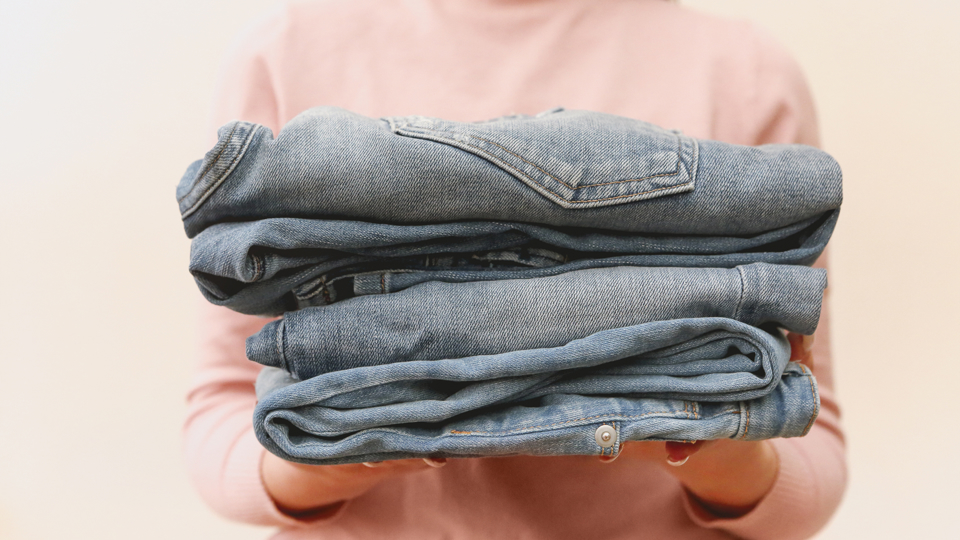- Sustainable Living
- Consumption
- Clothing and textiles
Clothing and textiles
Take care of your clothes, repair them when necessary and wear them for a long time, and you will contribute to sustainable textile consumption.
Clothing and other textiles have a major impact on the environment and climate. Today's textile production requires resources of raw materials, water, chemicals and energy and it causes emissions to air, land and water.
The most sustainable garment is one that you care for, repair and use for a long time. Regardless of the material it is made of.
Extend the lifespan
- Choose second hand – the clothes already exist and do not cause new emissions.
- Choose clothes of better quality that last longer.
- Find a good shoemaker and a good tailor. By repairing clothes and replacing the soles and heels of shoes, you extend their lifespan.
- Find bargains in your wardrobe. Use what you have. Find new combinations or spruce up old garments.
Shop consciously
- Think before you shop – do you need a new garment?
- Choose clothes that you will use many times.
- Choose eco-labelled clothing.
- Avoid chemicals. Antibacterial or dirt-repellent clothing may contain substances that are harmful to both the environment and your health.
- Do not choose training clothes and shoes with the label antibacterial, bactericidal or anti-odour. They contain environmentally hazardous substances.
- Check that impregnation sprays for clothes and shoes are fluorine-free, which is better for both you and the environment.
Avoid chemicals
- Antibacterial or dirt-repellent clothing may contain substances that are harmful to the environment and to health.
- Ask for fluorine-free leisure clothes, shoes and even impregnation sprays, there are now several environmentally friendly alternatives on the market.
- Avoid exercise clothes and shoes that are treated with antibacterial substances to prevent bad odors. These substances are often harmful to the environment.
- Wash new clothes and other textiles before they are used so that chemical residues from production are washed out.
- When buying a new sofa, curtains, carpets and other textiles, avoid highly fluorinated substances that make them dirt- and water-repellent. They may also be treated with flame retardants.
- Avoid furniture and cushions with foam rubber from the 1970s, 1980s and 1990s. Flame retardants were used then, which are now banned.
Recycle first
Small and large quantities of textiles that can be used again should not be thrown in the garbage bag. All intact and clean textiles can be sold or donated first. And secondly, left at the city's recycling centers, recycling, Pop-up recycling and Returrundan.
In this case, leave the textiles in a closed bag. Wash everything that can be washed before you leave it with us. Heavily soiled textiles that cannot be washed should be sorted separately and left with us for energy recovery, then ask our staff on site for help.
Dispose of correctly
If you want to get rid of your textiles, first think about whether you can sell or donate them.
From 1 October 2025, you can throw small quantities of clothing and textiles in the garbage bag. This mainly applies to very torn, heavily soiled and moldy textiles.
You should still return large quantities of textiles and large textiles such as sheets, curtains and larger towels to us even if they are, for example, torn or moldy. The reason for this is that a large amount of textile in the garbage bag can cause problems in our sorting facility, where your garbage bag ends up.
More information can be found at Stockholm Vatten och Avfall.
Sorting textiles and clothing, Stockholm Water and Waste website
Examples of textiles you can leave:
- All types of clothing
- Home textiles, such as curtains, sheets, tablecloths, pillows and blankets
- Accessories such as handbags, hats or scarves
- All types of shoes (put shoes that belong together in the same bag)
What happens next?
Submitted textiles are sorted by hand at a facility. The textiles that can be used are taken care of by procured recycling operators and are sold on or donated via aid efforts.
Textiles that cannot be used are sorted out and recycled, for example as insulation or padding in car seats.

